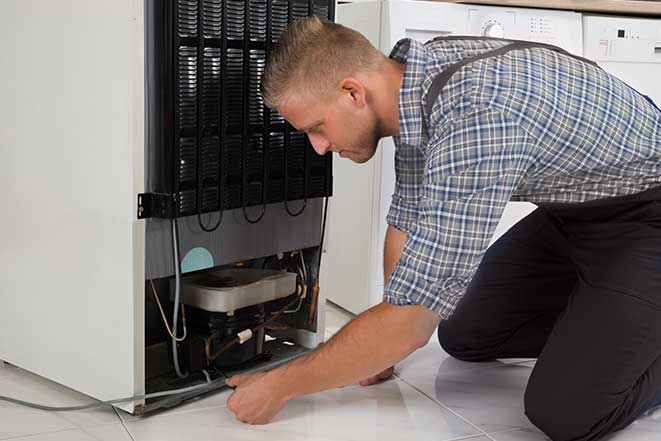If your refrigerator has suddenly stopped cooling, don’t panic just yet. There are several common reasons this can happen—and many of them are fixable without a professional. Below are the top 5 causes of refrigerator cooling issues and how to resolve them quickly.
1. Dirty Condenser Coils
Problem:
Condenser coils are responsible for releasing heat from the refrigerator. When they’re covered in dust, dirt, or pet hair, they can’t do their job properly, leading to poor cooling performance.
Solution:
Unplug your refrigerator and locate the condenser coils (usually at the back or underneath). Use a coil brush or vacuum to gently clean them. Make it a habit to clean the coils every 6–12 months.
2. Faulty Evaporator Fan Motor
Problem:
The evaporator fan circulates cold air throughout the fridge. If the fan stops working, your refrigerator won’t cool evenly—or at all.
Solution:
Listen for unusual noises or complete silence when the fridge door is closed. If the fan isn’t spinning or making noise, it may need to be replaced. You can order a compatible fan motor and follow an online guide to replace it or call a technician.
3. Thermostat Set Too High
Problem:
Sometimes, the issue is as simple as the temperature setting being too high, especially if someone accidentally changed it.
Solution:
Check the thermostat inside your fridge. Ideal refrigerator temperatures should be set between 35°F and 38°F (1.6°C to 3.3°C). Adjust accordingly and allow a few hours to see if cooling improves.
4. Blocked Air Vents
Problem:
Air vents inside your fridge and freezer allow cold air to circulate. When blocked by food containers or ice buildup, airflow is restricted, reducing overall cooling.
Solution:
Make sure vents inside both compartments are clear. Don’t overpack your refrigerator, and avoid placing items too close to the back wall where the vents are usually located.
5. Defective Start Relay
Problem:
The start relay helps power the compressor. If it’s defective, the compressor may not start, and your refrigerator won’t cool.
Solution:
You’ll need to test the start relay for continuity using a multimeter. If it’s faulty, replace it with a new one. Start relays are inexpensive and often available online or at appliance parts stores.
Final Thoughts
While some refrigerator cooling issues can be solved with simple DIY solutions, others may require the help of a professional technician. Regular maintenance—like cleaning coils and checking airflow—can help prevent many of these issues from occurring in the first place.
If your fridge still isn’t cooling after these checks, it might be time to call in a professional to diagnose more complex problems like compressor failure or control board issues.

